OXO Brew 9 Cup Stainless Steel Coffee Maker,Silver, Black
Original price was: $266.88.$222.40Current price is: $222.40.
- BetterBrew Precision Brewing controls water temperature and optimizes brew cycles
- Fully programmable with a single dial for easy use
- Temperature-controlled brewing between 197.6–204.8°F for optimal drip coffee
- Rainmaker shower head for even water distribution and better flavor extraction
- Internal mixing tube ensures consistent flavor from first to last sip
- Pause and pour feature for quick cup before brewing is complete
- Double-wall stainless steel thermal carafe keeps coffee hot
- Certified by SCA for gold-standard home brewing
Buying Guide: OXO Brew 9 Cup Stainless Steel Coffee Maker
Introduction
The OXO Brew 9 Cup Stainless Steel Coffee Maker is a high-quality coffee machine that offers precision brewing controls, programmability, and a range of features to enhance your coffee brewing experience. In this buying guide, we will walk you through the key factors to consider when selecting this coffee maker.
Key Features
- BetterBrew Precision Brewing
- Fully programmable
- Temperature-controlled brewing
- Rainmaker shower head
- Internal mixing tube
- Pause and pour feature
- Double-wall stainless steel thermal carafe
- Certified by the SCA
Capacity and Size
The OXO Brew 9 Cup Coffee Maker can brew up to 9 cups of coffee, making it suitable for small gatherings or everyday use. It has product dimensions of 8.3″D x 15″W x 17.2″H, ensuring it will fit comfortably on your kitchen countertop or in your office space.
Design and Color
This coffee maker features a sleek silver and black design, adding a modern touch to your kitchen’s aesthetic.
Special Features
This coffee maker comes with several special features, including:
- Jug
- Programmable settings
- Thermal carafe
- Timer
Coffee Maker Type
The OXO Brew 9 Cup Stainless Steel Coffee Maker is a drip coffee machine. It utilizes a filter basket for brewing.
Filter Type
This coffee maker comes with a reusable filter, eliminating the need for disposable paper filters and reducing waste.
Ease of Use
The OXO Brew 9 Cup Coffee Maker is fully programmable and features a single dial for easy operation. It also includes a pause and pour feature, allowing you to grab a quick cup of coffee before the brewing cycle completes.
Voltage and Power
This coffee maker operates at 120 Volts and 60Hz, ensuring compatibility with standard electrical outlets.
Manufacturer and Country of Origin
The OXO Brew 9 Cup Stainless Steel Coffee Maker is manufactured by OXO and has its origin in China.
Conclusion
The OXO Brew 9 Cup Stainless Steel Coffee Maker is a reliable and feature-rich coffee machine that offers precise brewing controls, programmability, and a stylish design. With its special features, ease of use, and certification by the SCA, it is an excellent choice for any coffee enthusiast. Consider the factors mentioned in this buying guide to make an informed decision and enjoy a rich and flavorful coffee brewing experience.
Price History for OXO Brew 9 Cup Stainless Steel Coffee Maker,Silver, Black
Statistics
| Current Price | $199.99 | June 30, 2025 |
| Highest Price | $229.95 | June 11, 2025 |
| Lowest Price | $183.46 | March 15, 2025 |
Last price changes
| $199.99 | June 30, 2025 |
| $199.94 | June 28, 2025 |
| $199.99 | June 16, 2025 |
| $229.95 | June 11, 2025 |
| $219.00 | May 25, 2025 |
Specification: OXO Brew 9 Cup Stainless Steel Coffee Maker,Silver, Black
|
3182 reviews for OXO Brew 9 Cup Stainless Steel Coffee Maker,Silver, Black
Only logged in customers who have purchased this product may leave a review.

Original price was: $266.88.$222.40Current price is: $222.40.
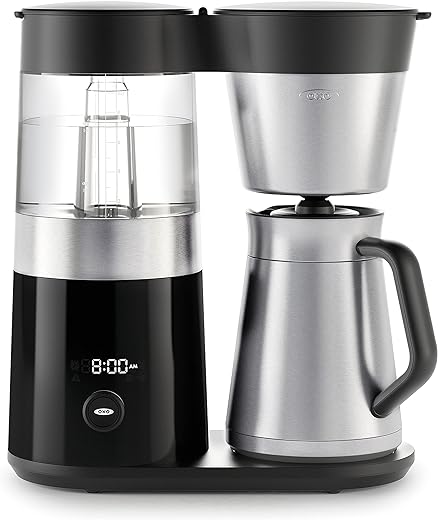
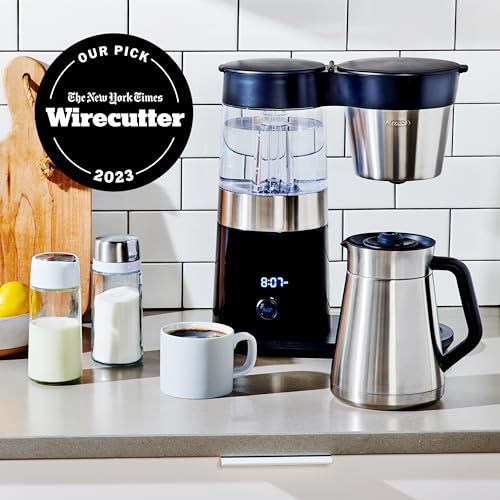
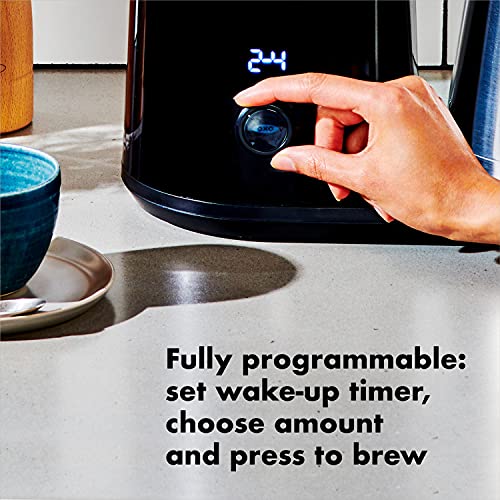



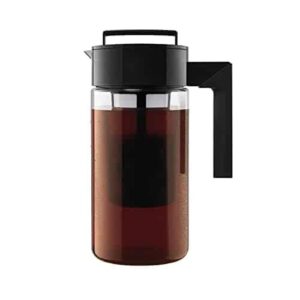

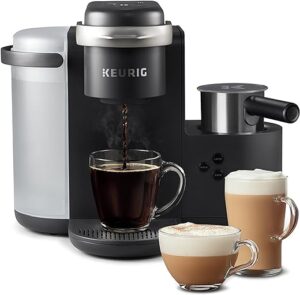
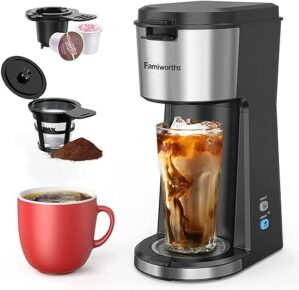
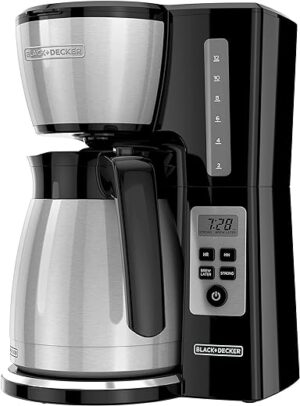

Maria B. Medic –
Makes a great coffee. However, the funnel drips once the pot is removed and drips need to be wiped up. The electronic display is stuck on a setting that says that we need to decalcify the machine. We have repeatedly, the signal is permanently on.
I would not buy this product again.
Amazon Customer –
I bought this at the beginning of Covid, March 2020 as we couldn’t do take out coffee and never have done so since. It is that good—but it started to leak today while descaling and constantly shut offs. Looks like we’ll have to buy a new one.
Pascal Laprade –
This coffee maker makes really good coffee. I have been using the OXO for about three months, now, and the coffee it makes is consistently good.
Of course, being certified by the Specialty Coffee Association, you would already expect that the OXO 8 cup Coffee Maker make good coffee.
For me, this was a big step up from my previously, second-hand coffee makers. I already had a Burr grinder, so the coffee maker was all I needed to get to a great coffee experience. I use a scale to measure the amount of coffee I put in the basket, as well as the water quantity, and the result is really, really good. Compared to these previous machines, the coffee is sweeter and richer, and I found it was easier for me to distinguish between coffee from different origins, as the specificities of each are just highlighted by the OXO.
It’s also a beautiful machine, the visual balance is well thought, the black finish is quite nice, and I really like to see the water being pumped in the middle of the water compartment.
I found it brews my coffee quick enough. I like the dial as a means of control, more than the traditional buttons. The LEDs just add a touch of modernity that is very welcomed.
The steel carafe keeps the coffee hot enough for my taste, and is relatively easy to clean, but will always keep a certain amount of coffee from pouring at the very end of the pot. You have to turn it upside down entirely for these last drops to fall out, which is not a big deal, but is still a bit annoying. I really like that the lid remains on during brewing, as I do not have to think about screwing it on as soon as it is finished.
The main issue I have with the OXO is that its drip valve doesn’t work at all… This could be a deal breaker for some, but I just learned to live with it. It started on the second or third day of usage, and has been consistent ever since. It is apparent that the metal spring just isn’t strong enough to close the valve when the carafe is removed. Since I never remove my carafe until the brew is complete, it’s not a major problem for me, but it still makes a mess every time I am done brewing, as a few drops that wouldn’t go into the carafe just spills over the base of the machine.
As I said, you can live with it if you don’t remove your carafe mid-brewing, but for a machine this price, such an obvious issue is pretty disappointing, especially since many other people seem to have that same issue.
But I still recommend the OXO 8 Cup Coffee Maker: it really does make good coffee, and it is just a beautiful object to have on your counter.
Joann M. –
I am very impressed with this coffee maker!
I am a very fussy coffee drinker. I searched for some time for a coffee maker that is easy to operate and makes a good cup of coffee. This coffee maker meets and exceeds my expectations on both counts. We have had it for a couple of months now and it still works great and continues to make great coffee! I highly recommend it!
LLP –
So glad I bought this coffee maker. It makes great tasting coffee in just a few minutes. Easy to use. The temperature of the coffee is amazing, very hot!!! My coffee stays hot in my thermos for hours!
Snowhater –
LATEST UPDATE: I finally got a replacement and looked closer at the condensation in the tank. I discovered a lot about the design of this coffee maker that I think is relevant to the original mildew issue. One important thing I found is that it isn’t just steam that flows back into the water tank, it’s also hot water, and it seems to be intentional. During brewing, or after brewing when the brew basket lid is opened, a little hot water leaks out of the water bridge, and the large open passage between the basket and tank is meant to drain this bit of water back into the tank instead of letting it go into the pot. Thus, not only is steam flowing through and condensing in the tank, but hot water is flowing back in, also.
Another important thing I found is that the condensation in the tank also comes from the boiler itself. The condensation forms due to the latent heat in the boiler vaporizing water remaining inside, and this vapor then flows back into the tank and condenses on the wall.
I sealed up all the open spaces between basket and tank using foam weatherstripping, as I’d suggested previously. I used the largest piece of foam in the “drain” space beneath the bridge, and because it contacts hot water that can enter the pot I coated it with food-safe silicone sealant. This decreased both the amount of steam and the amount of liquid water flowing back into the water tank. There’s still some condensation on the tank wall, as I noted above, that comes from the boiler itself.
Will this reduce the risk of mildew? Possibly, because of the lower amount of water condensation. But I think it will help in another important way. I’ve been trying to figure out where the mildew got its food. It had to have some organic matter to eat in order to grow. There are three possibilities: 1) There’s a material of construction in the tank that mildew can eat — very unlikely, as mildew need material that can be decomposed by their enzymes, and that’s probably not going to happen with most commercial plastics. 2) When filling the tank I either touched the inside with my hands or some bit of organic junk fell inside — very possible. 3) The coffee in the brew basket was the source of organic matter, and a bit of it was transported through the big “drain” hole into the tank due to the flow of steam and liquid hot water — this is also very possible, and I think even likely, because coffee is a great medium for growing mold and there’s a lot of it not far from the hole. Therefore, blocking up the opening should prevent this from happening.
So why is the machine designed with this way? Beats me. I can’t think of a good functional reason for this design, so I can only assume it was a cost driven choice. Thus, I’m not going to change my rating. I think this is a design oversight, and OXO can do better. However, the machine still makes great coffee, and I emphasize that so far only one other person here has had a mildew complaint, so the odds are there won’t be an issue for most.
ORIGINAL UPDATE: I have found a significant flaw in this machine. Steam from the brew basket flows back into the water tank, which then condenses to water that doesn’t evaporate away because of the closed tank lid. The dampness apparently caused mildew to grow in the tank, probably in the seams and joints where the clear tank meets the rest of the machine. This made the tank smell, and several times the coffee ended up smelling and once even tasting of mildew. Also, I was unable to eliminate the mildew odor because I couldn’t immerse the machine to soak it. You can probably avoid this issue by leaving the lid to the water tank open in order to keep it dry, but then you expose the tank to dust and germs. However, I think it can be fixed by using a piece of waterproof foamed weatherstripping to close up the space that joins the brew basket to the tank. You’ll have to cut it to fit, and make sure it doesn’t touch or interfere wth the water bridge that connects the boiler to the shower head. I’d also recommend coating the foam with some food grade silicone adhesive to keep it from possibly leaching chemicals into the coffee. Of course, you could also just use a big gob of the food grade silicone adhesive to seal up the space. It might be messy, but it should work just fine. Another simple solution might be to just leave the tank lid open between brew cycles but cover the tank with a clean cotton towel. That should allow the tank to dry out without letting foreign matter into it.
In fairness, I’ll note that so far I seem to be the one “lucky” person who has had this issue. Still, I’ve never seen a coffee maker that connects the brew basket directly to the water tank, and even the possibility of this mildew problem could have been avoided by not doing this. It’s a pretty stupid design flaw, and for now my review goes from 5 stars to 3. If I can successfully fix it as I described above, then maybe I’ll raise it to a 4.
———————————
I’ve spent a year looking for a coffee machine that 1) makes proper coffee; 2) is well made; 3) has a decent warranty from a recognized national brand; 4) doesn’t cost a small fortune. The OXO works on all counts, but as I mention in my update it has a really stupid design flaw that limits it to 3 stars.
What’s good:
The coffee:
Use a proper medium coarse grind and decently good quality beans, and the OXO will deliver. Here’s where I’m going to go into detail because I will make comparisons to two other popular pour-over machines I tried, the Bonavita 1900TS, and the Bodum Bistro.
The OXO is SCAA certified, and I have tested mine as close to the SCAA conditions as possible to prove that it does actually meet the very important temperature specification set out by the SCAA. With a fine wire thermocouple bead probe (a proper thermocouple with a proper junction compensated readout), I measured the temperature at the top of the grounds during the brew cycle (according to the SCAA procedure). It was 200 F +/- 3 degrees in the wet grounds for most of the brew cycle. This is spot on to the SCAA requirement. The exit temperature of the water from the head was about 207 F. The SCAA also tests at a position near the bottom of the grounds, but I didn’t do this. The Bonavita is also SCAA certified, but it did NOT meet the temperature requirement when I tested it. I actually tested two, because I exchanged the first one after determining this problem. Both exceeded the SCAA 205 F limit by the middle of the brew cycle and got as high as 210 F in the grounds, and water reached boiling temperature coming out of the head. The Bonavitas also made bitter coffee, and I believe it was due to this overheating. The Bodum is not SCAA certified, but performed like it was. It peaked at 204 F in the grounds, and it’s coffee was much better than the Bonavita, and just a little behind the OXO. This might be because it took longer to get into the right temperature range than the OXO. The 8 cup brew time is about 6.5 minutes for the OXO, 5.5 minutes for the Bonavita, and six minutes for the Bodum.
The shower head:
The OXO has a six hole shower head that covers a good deal of area, and which wets the grounds very evenly. After brewing, there are divots in the grounds beneath each hole, indicating that flow is uniform out of the heads. The Bonavita had a similar shower head that covered a larger area with more holes, but the uniformity of wetting was not good. As with many others, both of mine dumped water out of one or two holes only. Also, I found that after disassembling and reinstalling the shower head of the Bonavita according the the cleaning instructions, the head would leak along one of the assembly seams. The Bodum’s shower head was fantastic. It was all silicone, and had many holes over a wide area. It saturated the grounds perfectly, and there were so many holes that the grounds looked completely wet and even, without any divots beneath the holes.
The carafe:
I tested each machine with just a full tank of plain water run through the brew cycle. The OXO carafe is mostly excellent, with very good heat retention. The starting temperarture in the pot was 188F. It was at 179 F after one hour. It took four hours to get to 165 F. The Bonavita started at 189 F, and was at 173 F after one hour and just over 160 F after almost 3.5 hours. The Bodum started off around 182, and cooled to 160 after about 2.5 hours, which is not very good. The OXO carafe has a brew-through stopper, and does not dribble during pours. Also, the carafe is desgned properly to allow it to be used as a pitcher to fill the machine tank, so it pours out correctly without the stopper. The Bonavita design is terrible. First, the carafe stopper is not brew-through, so you have to brew then install the stopper. Second, try to use the carafe as a pitcher to fill the tank, and you will end up with water all over the place, as the mouth of the carafe is just not properly designed for pouring. Seriously – how does a company screw that up? The Bodum carafe can be used as a pitcher, but it’s not necessary as the unit has a really wonderful removable tank for direct filling (I loved this feature, and it was really well done). Like the OXO, it also has a brew-through stopper.
Build quality:
The OXO is the by far the best built of the three. It’s the heaviest of them, and has the nicest plastics, which are well molded and feel thicker than either of the others. The Bonavita was mostly typical softish thermoplastic, and wasn’t particularly badly made but it did land on the cheap side of build quality for the full retail price. The Bodum used lighter, stiffer thermoplastics, which felt quite cheap, and were easily broken. I dropped the filter basket, and just falling from counter to floor was enough to snap off the handle and leave a gaping hole in the side of it. Likewise, I dropped the carafe stopper and the spout snapped off. The Bodum, unbelievably, also had electronics located directly below the showerhead under the main seam where the front and back halves of the unit assembled. Nearby the seam was a safety switch that would activate when the carafe rested on it. Neither the seam nor the switch opening were sealed against water, so when residual water dripped from the showerhead it fell right onto the seam and switch and seeped into the switch assembly, basically killing the unit until I took it apart, cleaned the switch, and covered it with water repellant lube. The Bodum is overall poorly made, and it shocks me that when it first came out it retailed for $250! The OXO and Bonavita both offer a two year warranty. The Bodum comes with a one year warranty.
Design:
The OXO is attractive, with an upscale look, especially with the high quality appearance of the stainless steel finish. The tank is built in and must be filled with a pitcher or the like. It is clear, very visibly marked, and has a wide opening so there is no mess when filled. The Bonavita has a nice clean, conservative design, and is the most compact of the three. Its tank is also built in, with a wide opening, and also clear. The Bodum design is very attractive and very functional, and as I mentioned above, the unit has an awesome removable tank that is clear and well marked. This makes it the easiest machine of the three to fill. The filter basket of the OXO is for conical filters, and is quite deep, so it easily accommodates a filter. Right at where the top of the filter sits is a hole that opens to a drain channel. This is to direct any overflow (due to too much coffee or coffee ground too finely) into the pot, instead of onto your counter. The Bodum also has a conical basket, but it’s really meant to be used with a mesh filter. I did use paper filters with it, but the basket is rather short, so the filter required extra folding to make it fit. I also could not make a full 10 cup pot with the Bodum. At 8 cups, the short basket would fill almost to the top with coffee, and there was so little headroom that the grounds would float up and contact the shower head. The Bonavita’s basket was fine, a typical flat bottom filter basket. Overflows appear unlikely with this design. Both the OXO and the Bodum use a shutoff valve on the basket. As far as dripping from the basket when the carafe is removed after brewing, I have not had a single drip when removing the carafe from the OXO. The Bodum was also okay in this respect, dripping just a little now and then. Neither the Bodum nor the Bonavita have any sort of timer. The OXO does have a built in timer and clock.
What’s bad:
Previously I would have said there were no real flaws with the OXO, but the water condensation and resulting mildew odor in the tank that I experienced cannot be overlooked. It makes me wish all the more that it had a removable tank, because then I think it’d be possible to easily remove the mildew odor by cleaning. The single knob control is a cumbersome, but it is nice looking. I also don’t like the installation design of the stopper into the carafe. The stopper is not very large, is made of smooth plastic, and must insert and screw into a recessed opening at the mouth of the carafe. The smooth shape and lack of texture provides no grip, and there are no thread alignment features between the stopper and carafe. This makes it a little fiddly for me to get the stopper threaded in, especially because my hands are large. This is not what I want to be doing first thing in the morning, *before* I get any coffee!
The Bonavita had more misses than hits. The build was nothing special and the carafe design was inferior, as I’ve noted above. Most importantly, two separate units I tried both failed to meet the SCAA standard for temperature. This was in late-summer/early-fall of 2015, and I did contact Bonavita about it, so maybe they’ve corrected this. Still, the net result was that the coffee was consistently bitter and overextracted, and the machine was messy and not convenient to use.
What kills the Bodum, unfortunately, is the terrible build quality. There were my two breakages from simple drops, and an inexcusable lack of water sealing over electronics directly below the shower head. Read the other reviews, and it’s a litany of short lifetimes, bad switches, and broken plastic. Bodum customer service isn’t very good. I called to ask about replacement parts, and the thoroughly unenthusiastic service rep could tell me nothing about availability of parts. As far as I can tell, Bodum is no longer making replacement parts available for the Bistro.
Bottom line:
The OXO is the best of the three. I paid the full $199 retail for mine, but just missed a sale price of $149. In consideration of the water tank issue I think $199 is too much, but something in the vicinity of $150-$160 is acceptable.
The Bonavita – nah, I can’t get with it. It’s all hype, in my frank opinion. The design and manufacturing have too many flaws that affect usability, both units I tried didn’t meet the SCAA temperature standard even though they’re certified, and they just didn’t make good coffee. It originally retailed for $180, which is outrageous given these flaws. It can be had now for about $140, but that’s still too pricey. I honestly can’t see it being reasonable at any price over $120, considering its mediocre construction and marginal performance. On the positive side, I will note that Bonavita’s customer service was helpful when I reported the temperature issue, and they did seem eager to investigate the problem.
The Bodum – what a disappointment. So much potential. Great design, excellent coffee, but terribly built and unreliable, and the thermal performance of the carafe is rather poor. It’d be a good deal at the $130 full retail if it was built decently, but the odds of failure are just too great, and other reviews indicate that Bodum doesn’t even honor the one year warranty. It occasionally goes for $99, and if bought from Target it comes with a 90 day return, so you can always take a chance if you think the savings is worth it. But I think the OXO on sale for $149 is a better deal, as it is much more likely to outlast the Bodum by a large margin.
The winner: the OXO On Barista Brain.
mtspace –
I have owned two Capresso machines for a total of six years and I have owned two Bonavita machines for another six years. I find this machine to be better than either. At their best I would say that all three coffee makers are capable of making very good coffee, and I would be hard pressed to support the claim that the coffee made in this machine is consistently better than the best coffee from either of the previous brands. That said, it is very good. At Starbucks or at good restaurants I rarely find coffee that I enjoy so much. I don’t seek out coffee esoterica and I don’t consider myself a coffee snob; but I do buy good beans and I grind them for each use.
If the coffee made in this machine is not measureably better, why would one spring for the extra money for the OXO machine instead of the Bonavita or the Capresso?
Before we answer that question, we must explain why the thermal caraffe. The answer is that burners that keep uninsulated caraffes warm invariably burn coffee and they do not keep out air. The combination of oxygen and excess heat too quickly turn the tasty brew from beverage to burnt battery acid. Keep excess heat and air from fresh-brewed coffee and it can taste good for hours. Need it to be warmer? Pop your mug of coffee in the microwave for half a minute or so. A good thermal caraffe can keep coffee tasting fresh-brewed for four hours or more. And the caraffe on the OXO is that good.
WHAT MAKES OXO BETTER? —
1) The caraffe on this machine works better. It keeps coffee tasting fresh from the time it is made at 5:00 AM until lunchtime, around noon. None of the previous machines did this – although all were ten or fifty times better than open pots, there was always a bit of oxidation bitterness, even if the lid was kept on the thermal caraffe. A constant irritation with the Bonavita was that the pour spout was so poorly designed that (it seemed like) fully 10 percent of the coffee ran down the side of the caraffe onto the counter. Of course, pouring slowly could sometimes help a bit, but I never could do this. The people who will benefit most from this difference are absentminded guys whose wives hate cleaning up their reckless coffee spills. In such a case, this difference alone could help save a marriage.
2) The OXO machine’s fit and finish are better. I cannot tell why, but this machine just looks better sitting on my black granite countertops. Perhaps it is the shiny black plastic. Or the sculptural curves. In any case, it has the presence of a work of art, FWIW. This machine is, however, taller by about two inches. It has a greater kitchen presence. This extra size may sometimes be a tiny drawback – especially in a tiny galley kitchen.
3) The brew-stop feature really works. Remove the caraffe and two things happen: 1) a spring loaded plunger closes to stop coffee flow. 2) the machine senses the absence of the pot and pauses the brewing cycle. With the Bonavita, I always scalded my hand if I wanted coffee before the cycle finished; both features are missing from it.
4) Number 4 coffee filters actually fit. With the Bonavita, one must fold the paper filters over at the bottom and side joints, then hope that sliding the pot into position does not nudge the top of the filter closed – the consequence of which is a plugged machine with scalding hot water and coffee grounds flowing across the kitchen counter and floor. This little accident has happened probably two dozen times in the six years I’ve operated Bonavita machines. Diligence and determination reduced the frequency of occurrance, but it was always a hazard. With the OXO, the bin that holds the filter is deep enough that this kind of problem is much less likely. No folding, no sliding, no scalding coffee floes.
5) The clear water reservoir helps one see how far the brewing cycle has gotten. The Bonavita and the Capresso coffee makers had smoke tinted plastic reservoirs which allowed one to observe the water level from nearby; but not from acrosss the room. With the OXO I can observe the progress from across the kitchen.
6) Of course, once the novelty of it wears off I’m sure that this won’t count for much, but I happen to think it’s mildly amusing watch the water bubble up through the central heating tube. So does my wife. Who buys a coffee maker as a source of entertainment? I admit it’s not much, but we take our amusement where we can find it.
7) “The caraffe is not in place.” Fortunately, this coffee maker does not scold you for being neglectful as some cars did in the 1980’s with spoken phrases like “your door is a jar;” but it does turn on a red light when it senses that the pot is not in place. Absentminded people might find this of some help when they have started the machine by pushing the start button, but nothing has started happening … because the caraffe is in another room!
8) The microprocessor counts how many times you have brewed coffee since descaling. When it gets to 90 it tells you to descale the machine. Since I have lost 4 machines to scale, I like the idea that this might extend the life of this machine to the point that it actually has a lower cost of ownership than my previous machines. I know that it is saving me on electricity already because in my old Bonavita it now takes two cups of water to make one cup of coffee — it’s evaporating half of the water. That’s very energy intensive. It did not do this when it was new. Sadly, my experience with Bonavita machines is that once I notice that they need descaling, it is too late. So a friendly reminder might help me extend the life of my machine and keep brewing costs down.
My impression of OXO kitchen tools has always been that they are very carefully and thoughtfully designed. And that they are well executed. This coffee machine extends those brand values to coffee makers. At the point it completes the cycle, the coffee made by this machine is certainly as good as, if not perceptibly better than that of the Bonavita or Capresso; but the coffee keeps better in the caraffe, it pours into the cup better, and it is much less susceptible to filter handling errors that result in rivers of hot coffee running across the counters, down the cabinets, and onto the floor. It looks better, and I have reason to hope it will ultimately have a lower cost of ownership thanks to its descaling reminders. I’ve had it for a week and I am very pleased with it.